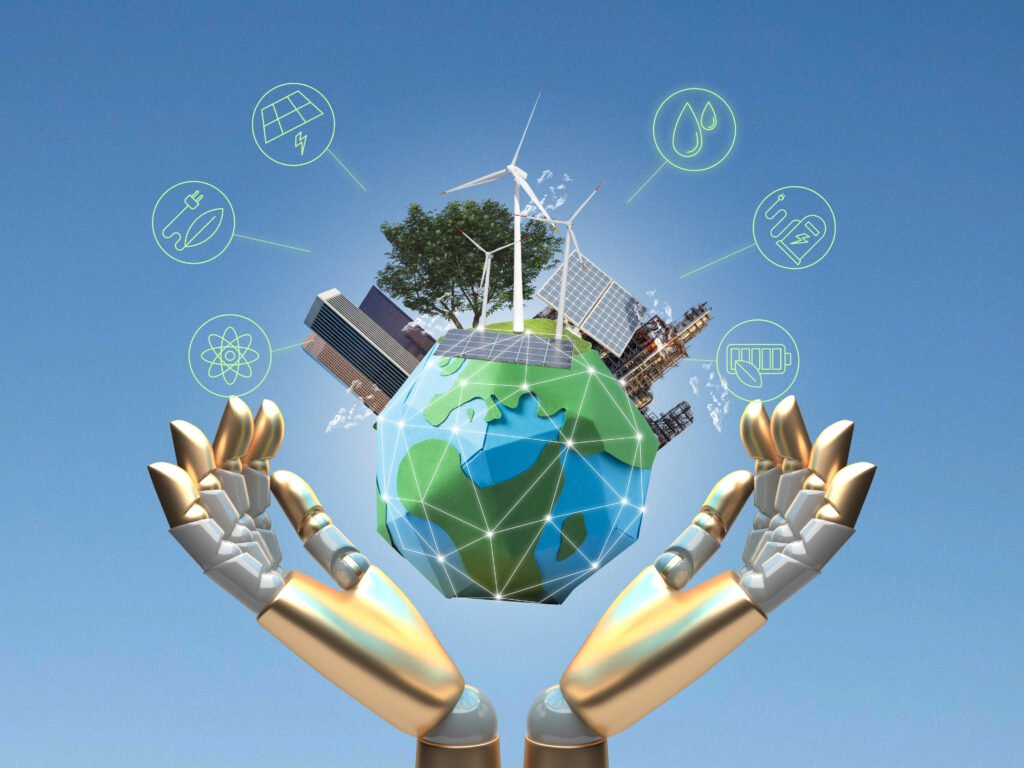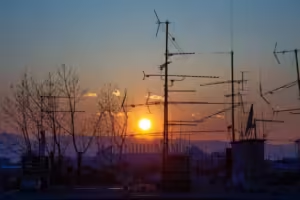Introduction to Power Electronics
Renewable energy systems have become a crucial part of our efforts to combat climate change and transition to a sustainable future. These systems harness the power of natural resources such as sunlight, wind, and water to generate clean electricity.
However, to effectively integrate renewable energy into the grid and optimize its performance, we rely on power electronics. In this article, we will explore the role of power electronics in renewable energy systems, the benefits they bring, and the impact they have on our energy future.
The Role of Power Electronics in Renewable Energy Systems
Power electronics play a vital role in renewable energy systems by enabling the conversion, control, and management of electrical power. These devices, such as inverters and converters, are responsible for transforming the electricity generated by renewable sources into a form that can be efficiently used or stored.
For example, solar panels produce direct current (DC) electricity, but most appliances and the grid operate on alternating current (AC). Power electronics bridge this gap by converting the DC electricity into AC, making it compatible with our existing infrastructure.
Another critical function of power electronics in renewable energy systems is power conditioning. As renewable energy sources are intermittent and their output can fluctuate, power electronics stabilize the electricity before it is fed into the grid.
They ensure a constant frequency, voltage, and quality of power, improving the reliability and stability of the entire energy system. In addition, power electronics enable the seamless integration of multiple renewable energy sources, such as solar and wind, by synchronizing their outputs and optimizing their performance.
Benefits of Using Power Electronics in Renewable Energy Systems
The utilization of power electronics in renewable energy systems brings numerous benefits. Firstly, power electronics enable maximum power extraction from renewable energy sources.
By continuously monitoring and adjusting the operating conditions, they ensure that the energy conversion is optimized, resulting in higher energy yields. This increased efficiency translates into more power being generated from the same resources, making renewable energy systems more economically viable and reducing their environmental footprint.
Furthermore, power electronics enhance the reliability and stability of renewable energy systems. By regulating the voltage and frequency, they prevent fluctuations and disturbances, improving the overall grid performance. This stability is crucial for the successful integration of renewable energy into the existing power infrastructure, minimizing the risk of power outages or disruptions.
Power electronics also protect against overvoltage, overcurrent, and other electrical faults, safeguarding the system and reducing the likelihood of damage.
Additionally, power electronics enable advanced grid functionalities, such as grid-tied inverters with smart grid capabilities. These inverters can communicate with the grid and respond to signals, allowing for dynamic control and grid support services.
For example, they can help stabilize the grid frequency or provide reactive power support when needed. These functionalities enhance the reliability of the grid and enable a smoother transition to a renewable energy-based future.
Examples of Power Electronics in Action
The impact of power electronics on renewable energy systems can be seen in various real-world applications. One such example is the use of power electronics in photovoltaic (PV) systems. PV systems convert sunlight into electricity, but the generated DC power needs to be converted into AC for practical use.
Inverters, a type of power electronics device, are used to perform this conversion. They ensure that the PV system operates at its maximum power point, maximizing the energy output. In addition, inverters provide grid synchronization, power quality control, and safety features.
Another example is the integration of power electronics in wind turbines. Wind energy systems rely on power electronics to convert the variable speed and frequency of the wind turbine into a stable electrical output. Power electronics control the rotational speed of the turbine, allowing it to operate optimally across a wide range of wind speeds. They also enable the smooth integration of wind turbines into the grid, ensuring a stable power supply and grid compatibility.
Challenges and Advancements in Power Electronics for Renewable Energy
While power electronics have revolutionized renewable energy systems, there are still challenges to overcome and ongoing advancements in the field. One of the main challenges is the cost of power electronics devices. Although the prices have been decreasing, they still represent a significant portion of the overall system cost. Researchers and manufacturers are striving to develop more cost-effective solutions, such as using new materials, improving manufacturing processes, and increasing production volumes.
Another challenge is the efficiency of power electronic devices. While they have significantly improved over the years, there is still room for enhancement. Higher efficiency means less energy loss during conversion, leading to greater overall system efficiency.
This can be achieved through the development of advanced semiconductor materials and innovative circuit topologies. Additionally, the miniaturization of power electronics devices can improve their efficiency by reducing parasitic losses and improving thermal management.
Advancements in power electronics are also focused on increasing their power density and reliability. Higher power density means that more power can be handled by smaller and lighter devices, enabling compact and efficient designs.
Reliability is crucial for the long-term operation of renewable energy systems, as power electronics devices are exposed to harsh environmental conditions and must withstand high power loads. Research is being conducted to improve device packaging, cooling methods, and fault detection techniques to ensure the reliability and longevity of power electronics in renewable energy systems.
The Future of Power Electronics in Renewable Energy Systems
As renewable energy continues to expand its share in the global energy mix, the future of power electronics looks promising. Technological advancements and economies of scale are expected to drive down the cost of power electronics devices, making renewable energy systems more affordable and accessible. This will further accelerate the adoption of renewable energy and contribute to the decarbonization of the energy sector.
Additionally, the integration of power electronics with energy storage systems will play a crucial role in the future of renewable energy. Energy storage technologies, such as batteries, allow for the efficient storage and utilization of excess energy generated by renewable sources.
Power electronics enable the bi-directional flow of energy between the storage system and the grid, providing flexibility and grid support services. This combination of power electronics and energy storage will enable a more reliable and resilient energy infrastructure, capable of handling the variability of renewable energy sources.
Furthermore, power electronics will continue to play a vital role in the grid integration of renewable energy. As the share of renewable energy increases, the grid will need to adapt to handle the intermittent nature of these sources.
Power electronics devices, such as grid-tied inverters, will be essential in managing the power flow, maintaining grid stability, and providing grid support services. Advanced control algorithms and communication systems will enable more efficient and intelligent grid operation, facilitating the seamless integration of renewable energy.
Power Electronics in Electric Vehicles and Transportation
Power electronics also have a significant impact on the electrification of transportation, particularly in electric vehicles (EVs). EVs rely on power electronics for various functions, such as converting the DC power from the battery into AC for the electric motor, controlling the motor speed, and managing the charging process. Power electronics devices, including onboard chargers and motor controllers, are crucial for the efficient and reliable operation of EVs.
In addition to EVs, power electronics are also utilized in other forms of electric transportation, such as electric trains and buses. Power electronics enable the efficient propulsion of these vehicles by controlling the power flow and optimizing the energy conversion. They also facilitate regenerative braking, where the kinetic energy of the vehicle is converted back into electrical energy and stored for later use. This regenerative braking not only improves energy efficiency but also reduces wear on the braking system, enhancing the overall performance and lifespan of the vehicle.
Conclusion
Power electronics are instrumental in powering the future of renewable energy systems. They enable the efficient conversion, control, and management of electrical power, maximizing the performance of renewable energy sources. Power electronics bring numerous benefits, including increased energy yields, improved grid stability, and advanced grid functionalities.
Examples of power electronics in action can be seen in photovoltaic systems and wind turbines. However, there are still challenges to overcome and ongoing advancements in the field, focusing on cost reduction, efficiency improvement, power density increase, and reliability enhancement.
The future of power electronics in renewable energy systems looks promising, with further cost reductions, integration with energy storage, and grid integration advancements. Power electronics also play a vital role in the electrification of transportation, particularly in electric vehicles.
With their continued development and deployment, power electronics will continue to shape the renewable energy landscape and pave the way for a sustainable and clean energy future.












